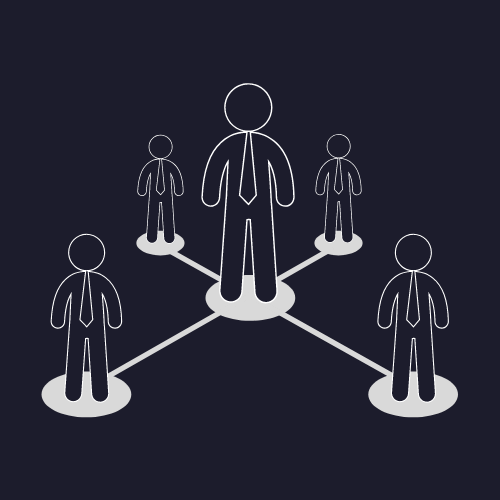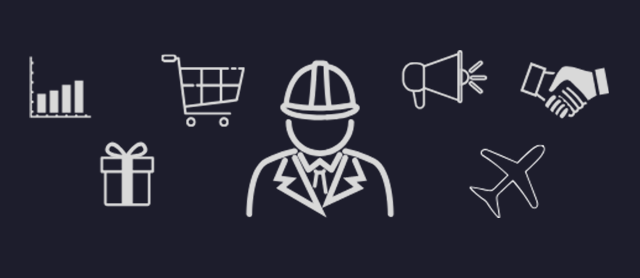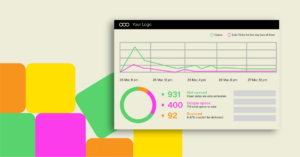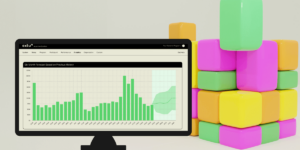Manufacturers, distributors, and wholesalers use channel incentive programs as part of their go-to-market strategy. Channel incentives are a behavioral modification tool that influence channel partners – such as dealers, contractors, resellers, and vendors – to align their behaviors with overarching business goals.
These behaviors could include:
- Increasing overall sales volume.
- Increasing sales for high margin products.
- Reducing old inventory.
- Accelerating new product adoption.
- Providing referrals to increase market penetration.
- Promoting product bundling and relevant cross-sales.
- Providing quality channel data.
- Improving marketing throughout the channel.
Channel incentives can also be used to inspire channel loyalty, achieve product differentiation, and to provide education and enablement to channel partners. All of these factors increase the likelihood that channel partners are motivated and equipped to effectively sell your products.
Why Are Sales Channel Incentive Programs Important?
Think of any major purchase you made recently. This could be a car, an HVAC unit, a new computer, a life insurance policy. Did you buy it directly from a manufacturer? Or did you buy it from an intermediary business? Did an independent agent help you narrow down your options, explore the pros and cons of available products, and influence your purchasing decision?
This is what is known as an indirect sale. It flows through a channel by way of an intermediary business. Take a new HVAC unit, for instance. It moved from the manufacturer, through a distributor, who sold it to a contractor, who sold it to you. If that contractor recommends one unit over another, or dissuades you from purchasing a certain brand, chances are a channel incentive program influenced their recommendation.
Over 73% of all world trade (or $80 trillion) is sold through a channel. Investments in the channel have a higher ROI than investments in direct sales or consumer marketing. A channel incentive program is an important tool for manufacturers, distributors, and wholesalers to impact the effectiveness of their sales channel strategies.
Types of Channel Partner Incentives:
1. Channel Sales Incentives
Sales-based channel incentives are the most common type of partner incentive. For these incentives, channel partner reps are awarded based on sales volume, margin, product-type, or for exceeding goals for incremental growth. Channel sales incentives help manufacturers scale vertically, horizontally, or improve profitability.
Channel sales incentives can take the form of reloadable or single-use debit cards or gift card rewards for short-term promotions, or points-based merchandise rewards and incentive travel rewards for longer-term, more loyalty-based promotions.
2. Channel SPIFFs
Channel SPIFFs (Sales Performance Index Funding Formula) are a type of channel sales incentives, where individual reps are rewarded based on a percentage of the sale. The primary difference is that channel SPIFFs are short-term promotions that target specific business initiatives. So while a channel sales incentive program could be designed to achieve long-term market penetration and build loyalty, channel SPIFFs target short-term growth or to increase sales of a specific product over a short time period. Most often, channel SPIFFs are awarded on reloadable debit cards.
3. Channel Rebates
Channel rebate programs are used to generate demand and influence buyer preference. For channel rebates, partners are awarded based on order size or frequency, typically for a specific product. Channel rebates can also be used as part of a data collection strategy, with required forms and supporting document uploads that can supply valuable sales and marketing data. Rebates typically take the form of debit card rewards to help channel partners reduce overhead costs.
4. Referral Incentives
Referral incentives are a valuable tool manufacturers and distributors can use to expand their reach. For referral incentive programs, channel partners are rewarded for deal registration and identifying opportunities. An HVAC contractor, for example, might be awarded points for registering a potential end-user that turns into a qualified opportunity. Referral incentives can take the form of points-based rewards, gift cards, debit cards, or incentive travel promotions.

5. Warranty Registrations and Bundling
Warranty registrations and bundling incentives are rewarded for actions that are in addition to the sale, but that increase the value of that sale to manufacturers and distributors. Warranty registrations are a valuable source of end-user data that parent companies can use to inform their sales and marketing efforts. Product and service bundling is a way for manufacturers, distributors, and wholesalers to maximize the value of the sale.
6. Enablement and Training Incentives
Even though they don’t work for the parent company, channel partners are often brand representatives to the end-user. It is the responsibility of manufacturers, distributors, and wholesalers to make sure that channel partners are knowledgeable and have the support they need to sell their products to end-users. Providing training incentives for taking online quizzes, gaining certifications, or attending tradeshows and conferences, can pay huge dividends for companies who sell through a channel. Often channel partners sell for a variety of different brands – and they are more likely to sell what they know.
7. Loyalty Incentives and Partner Retention
High-performing channel partners might have already reached their ceiling in regard to sales volume or profitability. But guess what? Chances are the highest-performing channel partners are competent, driven, and in high demand. These are exactly the channel partners that manufacturers and distributors cannot afford to lose. Channel loyalty programs are less about growth and more about retention and solidifying loyalty with top partners to keep them away from the competition.

8. Channel Marketing Incentives
Channel marketing incentives are used to motivate channel partners to help market your products and build your brand. MDFs (marketing development funds) and COOP (cooperative marketing funds) are collaborative incentive structures that help manufacturers and channel partners market products more effectively throughout the supply chain.
9. Activity-Based Incentives
Channel partners can act as extensions of your business beyond just sales and marketing. Activity-based partner incentives can be used to reward channel partner for managing relationships and contracts throughout your supply chain, scheduling demos, or other activities that are beneficial for your business.
10. VAR Incentives
VARs (value-added resellers) are channel partners who add features and services to your products and then resells them as a “turn-key” solution. VAR incentive programs are used to educate resellers about your products and to motivate them to incorporate your products as part of their resale solution. VAR incentive programs can be a powerful tool for manufacturers and distributors to expand their reach and market penetration.
How Do You Start a Sales Channel Incentive Program?
Before launching a sales channel incentive program, it’s important to take the time to analyze your channel and your goals:
- Identify which member(s) of your channel have the most potential impact on the purchasing decisions of end users.
- Determine your objective for this segment of your channel – such as increasing sales from dealer-distributor sales reps or improving the product knowledge of your contractors.
- Allocate the necessary budget that will be needed to change behavior for these channel partners. In our experience, it costs about $500 in reward spend per channel partner per year to meaningfully change their behavior.
- Determine what product knowledge, training, or enablement your channel partners will need to accomplish your program goals.
- Select rewards based on your goals for your program, the timescale of your promotions, and the interests of your audience.
- Identify KPIs (key performance indicators) to set award rules and to analyze the success of your program.
- Integrate your channel incentive program with your other business platforms to streamline admin and improve user experience.
- Market your program – both to build awareness, engage channel partners, and to “close the circle,” making sure your channel partners are redeeming their points for rewards.
- Analyze reports and identify opportunities for growth.
- Keep your program fresh by changing promotions, using points bonuses, and updating your reward catalog.
A channel incentive program is an investment, but one that has many potential benefits for manufacturers, distributors, and wholesalers. If you have never run a channel partner incentive program before, we recommend teaming up with a channel incentive provider to structure your program and beginning with a small pilot program to prove success before scaling your program.



